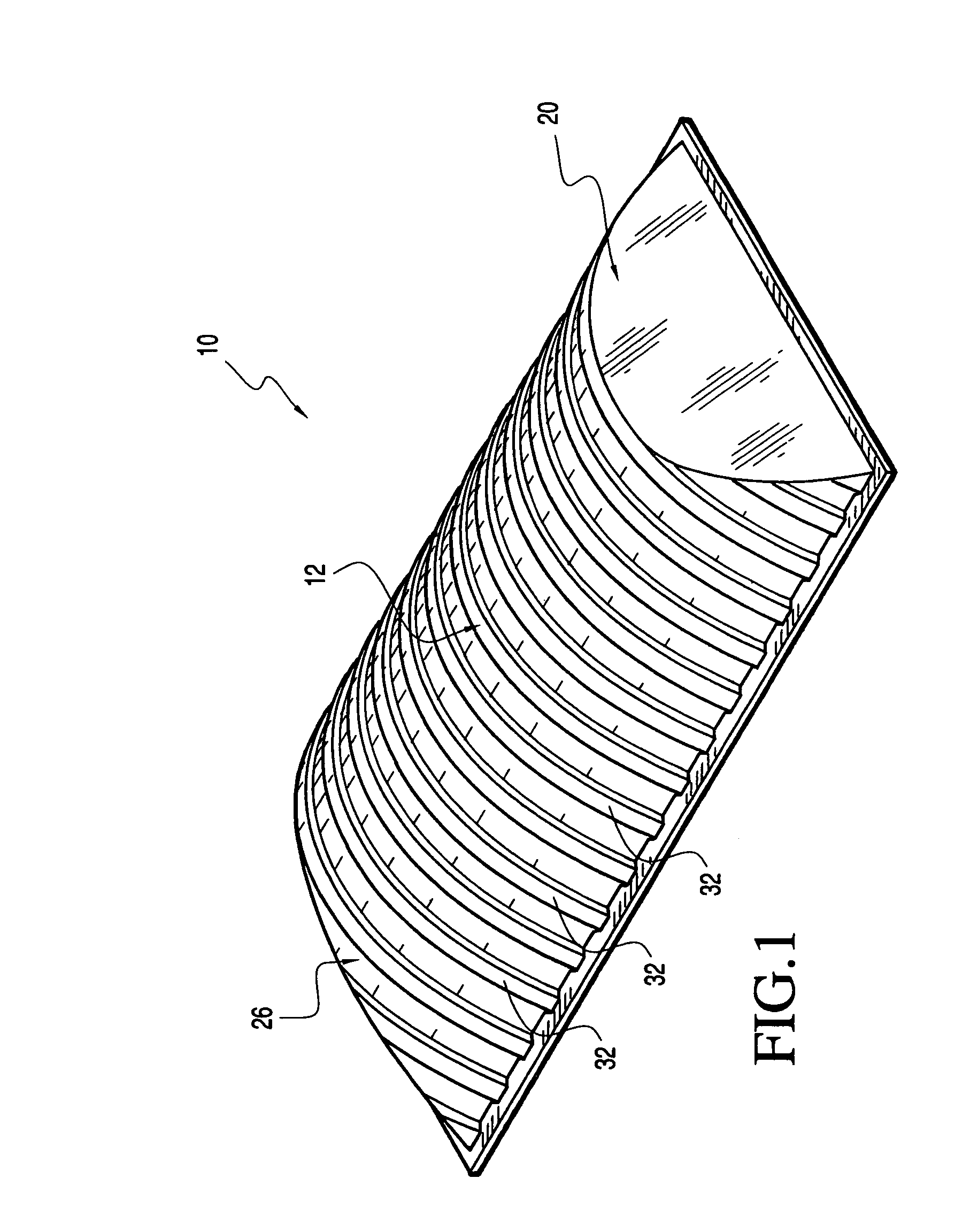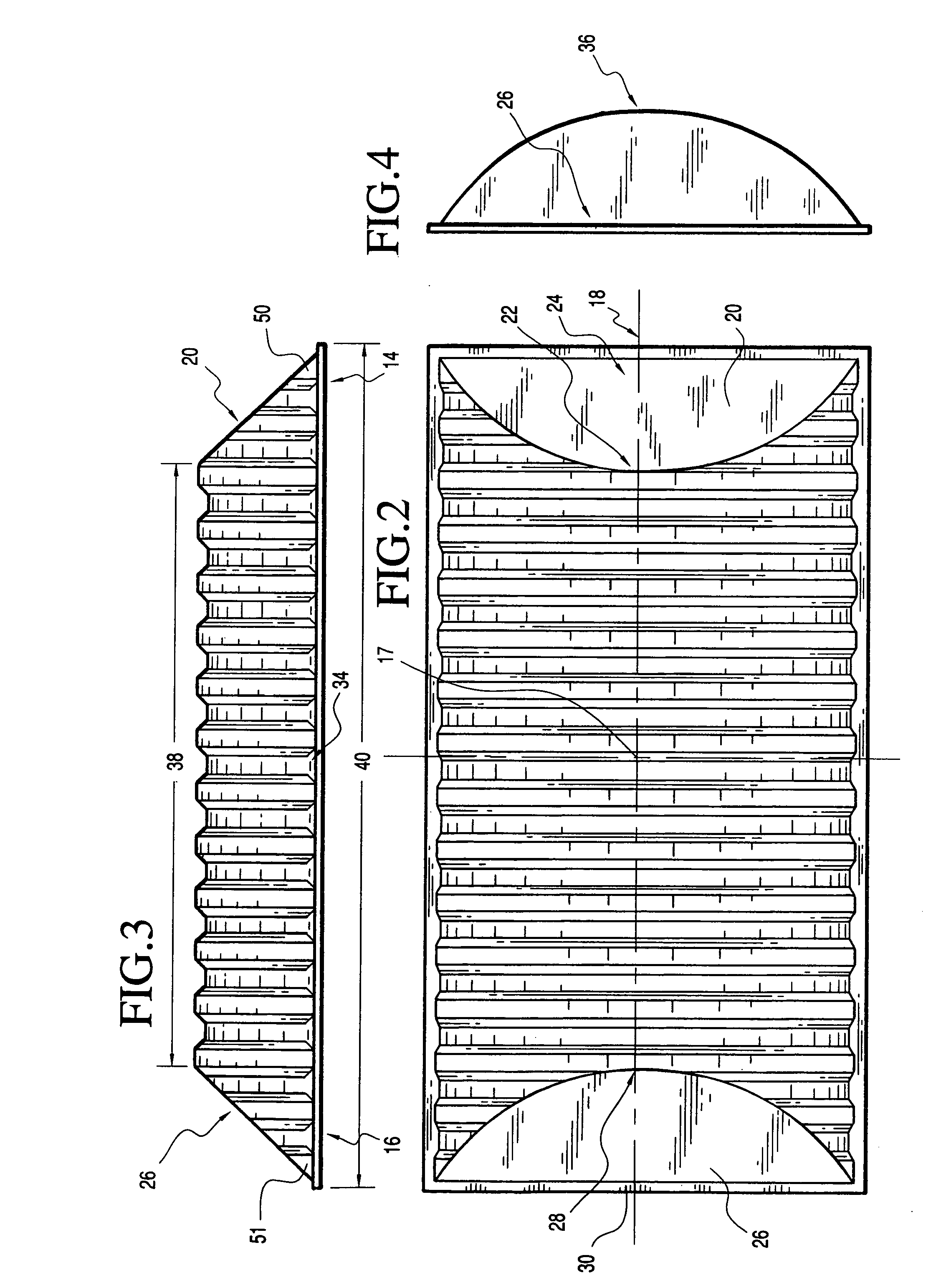Skylight
a technology of skylights and domes, applied in the field of skylights, can solve the problems of reducing reducing the ability of dome skylights to be inserted into the roofs of buildings, and affecting the performance of skylights, so as to reduce the light transmittance of skylights, improve the effect of skylights, and increase the cost of their manufactur
- Summary
- Abstract
- Description
- Claims
- Application Information
AI Technical Summary
Benefits of technology
Problems solved by technology
Method used
Image
Examples
Embodiment Construction
[0042]FIGS. 1-5, as well as FIGS. 21 and 22, show an exemplary embodiment of a skylight 10 made in accordance with this invention. Skylight 10 includes a main body 12, a first end portion 20, a second end portion 26, and corrugations 32.
[0043]Main body 12 is arched and has a base 34 and an apex 36. Main body 12 is arched along its longitudinal axis 18. It should be appreciated that in other exemplary embodiments the main body is arched along an axis substantially perpendicular to its longitudinal axis. Main body 12 is arched in the shape of a curve. It is preferred that main body 12 be arched in the shape of a parabola. In other various exemplary embodiments of the invention, the main body is arched in other shapes, such as, for example an A-frame shape or in a continues curve. Main body 12 arches from base 34 and reaches its maximum height at apex 36.
[0044]Main body 12 further includes a first length 38 and a second length 40. It should be appreciated that the main body is comprise...
PUM
 Login to View More
Login to View More Abstract
Description
Claims
Application Information
 Login to View More
Login to View More - R&D
- Intellectual Property
- Life Sciences
- Materials
- Tech Scout
- Unparalleled Data Quality
- Higher Quality Content
- 60% Fewer Hallucinations
Browse by: Latest US Patents, China's latest patents, Technical Efficacy Thesaurus, Application Domain, Technology Topic, Popular Technical Reports.
© 2025 PatSnap. All rights reserved.Legal|Privacy policy|Modern Slavery Act Transparency Statement|Sitemap|About US| Contact US: help@patsnap.com



